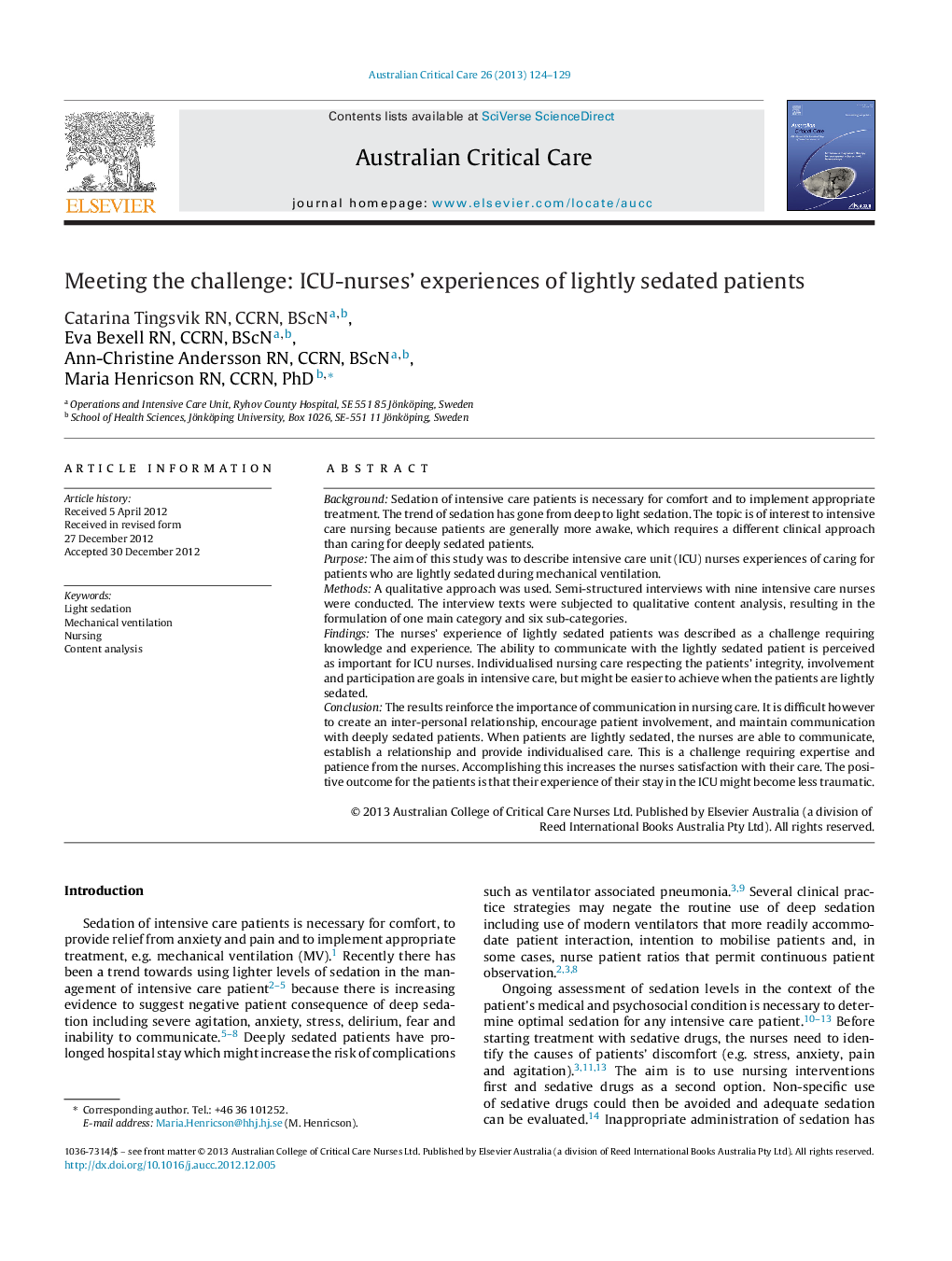| Article ID | Journal | Published Year | Pages | File Type |
|---|---|---|---|---|
| 2606509 | Australian Critical Care | 2013 | 6 Pages |
BackgroundSedation of intensive care patients is necessary for comfort and to implement appropriate treatment. The trend of sedation has gone from deep to light sedation. The topic is of interest to intensive care nursing because patients are generally more awake, which requires a different clinical approach than caring for deeply sedated patients.PurposeThe aim of this study was to describe intensive care unit (ICU) nurses experiences of caring for patients who are lightly sedated during mechanical ventilation.MethodsA qualitative approach was used. Semi-structured interviews with nine intensive care nurses were conducted. The interview texts were subjected to qualitative content analysis, resulting in the formulation of one main category and six sub-categories.FindingsThe nurses’ experience of lightly sedated patients was described as a challenge requiring knowledge and experience. The ability to communicate with the lightly sedated patient is perceived as important for ICU nurses. Individualised nursing care respecting the patients’ integrity, involvement and participation are goals in intensive care, but might be easier to achieve when the patients are lightly sedated.ConclusionThe results reinforce the importance of communication in nursing care. It is difficult however to create an inter-personal relationship, encourage patient involvement, and maintain communication with deeply sedated patients. When patients are lightly sedated, the nurses are able to communicate, establish a relationship and provide individualised care. This is a challenge requiring expertise and patience from the nurses. Accomplishing this increases the nurses satisfaction with their care. The positive outcome for the patients is that their experience of their stay in the ICU might become less traumatic.
